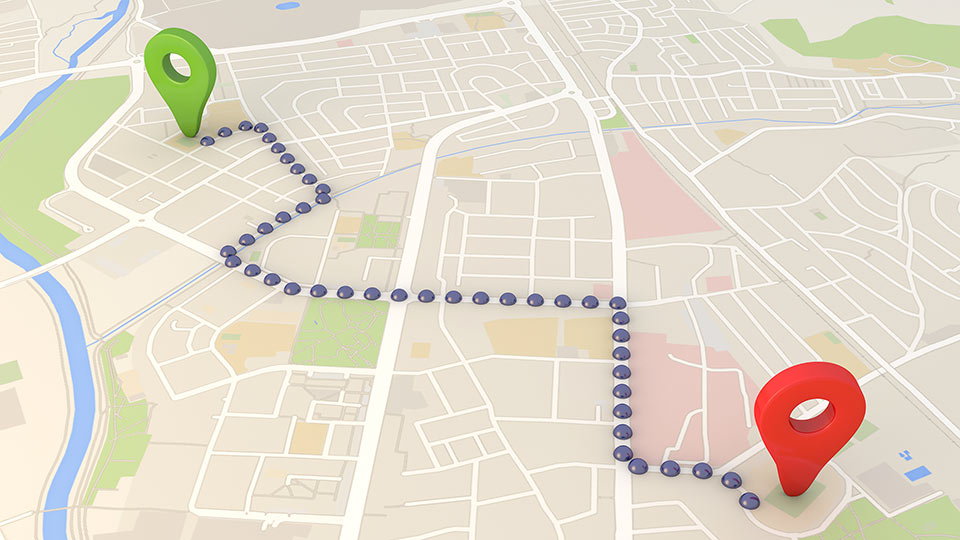GPS in the spotlight
GPS technology works when signals are sent from a network of satellites that orbit the earth in its atmosphere to your GPS device.

By Jason Widla
Jul 14, 2014
Updated: Jan 5, 2024

In its most basic form, vehicle tracking and fleet management systems help managers, dispatchers, and supervisors track the position of their assets in real-time using GPS – global positioning systems. Like most modern day technologies, it’s easy to take for granted how extraordinary these everyday instruments are.
See also:
History of GPS satellites and commercial GPS tracking
Introduction to GPS Technology
In short, GPS technology works when signals are sent from a network of satellites that orbit the earth in its atmosphere to your GPS device situated on, or near, the Earth’s surface. These signals are read and interpreted by your GPS receiver, which then provides your relative location.
A standard GPS receiver must be able to detect the broadcasts from at least four satellites in order to calculate your position:
- Three of the satellites are used to determine your position
- The fourth is used as validation in the case that the other three produce inconsistent data
The time it takes for each of the three satellite signals to reach the GPS receiver is used to calculate the distance of the GPS receiver from the three satellites. This data is then used to determine your:
- Longitude and latitude within about three meters of accuracy
- Altitude
- Velocity
- Synchronized time
Factors that can impact GPS performance
On the spectrum of signals, signal strength is considered to be relatively weak. This means that your GPS can be impacted by certain uncontrollable factors. Here are some situations in which the performance of your GPS receiver may be compromised:
- There are poor weather conditions, such as dense clouds or heavy precipitation
- The receiver is in an environment where physical obstructions, such as mountains, deep valleys, tall buildings, overhangs, bridges or tunnels are apparent
- The receiver is obstructed by something within the vehicle
Understanding GPS jamming
To address the last point about local interference, otherwise known as jamming, it is important to note that the Geotab GO6 device and other newer models are able to detect the occurrence of local GPS jamming. In the case that local jamming occurs, the GPS modem will report a “debug log” which can be found in the Log Details within MyGeotab: “GpsJammingDetected”
See also: What are GPS jammers and how do you combat them?
If you find that your device is unable to accurately track your assets, you will want to check for any instances of this debug log being reported. If the debug log has been reported, you can begin to identify what may be causing the GPS jamming. In some trucks, certain metal components in the driver’s steering column can obstruct the GPS signal. In other vehicles, such as limousines, the GPS signal can be obstructed by a special metallic coating on the windshield, which is not visible to the eye. It is not always easy to identify what is causing the jamming. For instance, some newer models of Hino trucks use a certain Jensen radio system, which includes a CD laser reader that has been proven to cause interference with GPS signals.
If you are unable to determine what is jamming your GPS signal, it is best to contact your authorized Geotab reseller who can assist you in identifying the possible causes and suggest resolutions.
Let us know what you think of this blog post, and if you have any questions, by placing your questions and comments in the area below.
Subscribe to get industry tips and insights

Jason Widla is a Solutions Engineering Manager for Geotab with a primary focus on technical project management and the implementation of external device hardware integrations.
Table of Contents
Subscribe to get industry tips and insights
Related posts

9 strategies to increase fleet fuel efficiency and lower fuel costs
July 8, 2025
4 minute read


The impact of unproductive idling on police vehicle service life
June 10, 2025
3 minute read

Multi-stop route planners: A fleet manager's guide + best tools in 2025
June 5, 2025
5 minute read

Commercial truck insurance cost: Rates by state + how to save
June 5, 2025
5 minute read
